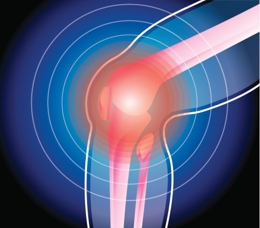The knee is a complex joint which has ligaments, tendons and bones. Here are some of the common injuries that can affect it.

The knee is a complex joint made up of various types of structures, which include ligaments, tendons, and bones. Stiffness, swelling, and pain are some of the symptoms of knee injuries. Given below are some of the common injuries that affect the knees:
Internal Fracture or Torn Ligaments: Has your knee changed in shape or become misshapen? It could be due to torn ligaments or a fracture in the internal part of the knee.
Pre-Patellar Bursitis or Fracture: Do you experience pain when performing any activity? Is the kneecap warm, tender, and swollen? These could be due to a fracture or bruise of the kneecap, if you have fallen hard on that affected knee. Or else, it could be a symptom of pre-patellar disease, which is caused due to the irritation of the bursa, which is a small fluid-filled sac located in front of the kneecap.
Chondromalacia Patellae or Torn Ligament or Torn Cartilage: Is there pain in your knee? Is it swollen and tender? It could be due to a torn ligament or torn cartilage. Or because of a condition known as Chondromalacia Patellae, which results in the softening of the cartilage or ligament beneath the kneecap.
Torn Hamstring Muscle: Is there a sharp pain on the posterior part of your knee? And, is stretching your leg painful? It could be due to a torn hamstring muscle.
Articular Cartilage Injury: Is there a swelling in the knee accompanied by a vague pain? It could be because of Articular Cartilage Injury, which can be caused due to wear and tear or because of physical injury.
Hyperextension of the Knee: This pertains to an injury wherein the knee is extended beyond its normal straightened position. In this position the lower leg is forced excessively in front in relation to the upper part of the leg. The knee is often hyperextended due to a contact injury caused to the lower leg, or landing awkwardly after a jump. It is one of the common knee injuries that occurs in leaping or jumping sports like basketball and gymnastics. The symptoms are pain, impaired mobility, instability, and swelling of the knee joint.
Patellar Tendinitis: Is there a pain between your patella, or kneecap, and the area where the tendon is attached to the tibia, or shinbone? Does the pain become especially sharp during physical activity, particularly when jumping or running? And is there a persistent dull pain after a practice session or a workout? This could be due to Patellar Tendinitis, which is an overuse injury affecting the tendon that connects your patella to your tibia.
Injuries to the Knee Ligaments: The knee has two cruciate ligaments, one located in the front side of the knee, known as the anterior cruciate ligament, or ACL, and the other located at the posterior side of the knee, known as the posterior cruciate ligament, or PCL. When these ligaments are injured, there may not be immediate pain, however there may be a popping sound and the knee may give out from beneath you. There will be swelling in the knee within 2-1/2 hours and there will be pain when you try standing.
Torn Meniscus: Is there persistent pain in your knee? Are you unable to move it as usual? Is there instability of the knee? These symptoms could be due to a torn meniscus, which is a cartilage disc that helps to cushion the ends of the bones that meet at the knee joint.
Torn Cartilage: If you feel grinding sensation in your knee joint or it locks, it could be because of a tear in the cartilage.
Osgood-Schlatter Disease: If you are between 12-18 years of age and suffer from pain, swelling, or tenderness that is located just under your kneecap which becomes worse during activity, it could be due to Osgood-Schlatter disease. This is a condition that affects most boys during their preteen years when they have a growth spurt.
Baker's Cyst: If there is a swelling in the posterior side of your knee, it could be because of Baker's Cyst.
Osteoarthritis of the Knee: If your knee has been experiencing stiffness, pain, tenderness, swelling, and redness over several months or even years, with the pain worsening when the weather changes, it could be due to osteoarthritis.
These were some of the most common knee injuries. They can be painful and restrict your ability to move. Seek medical attention to minimize the pain and ensure a quick recovery.
Disclaimer: This article is for informative purposes only and does not in any way attempt to replace the advice offered by an expert on the subject.


 The knee is a complex joint made up of various types of structures, which include ligaments, tendons, and bones. Stiffness, swelling, and pain are some of the symptoms of knee injuries. Given below are some of the common injuries that affect the knees:
The knee is a complex joint made up of various types of structures, which include ligaments, tendons, and bones. Stiffness, swelling, and pain are some of the symptoms of knee injuries. Given below are some of the common injuries that affect the knees: